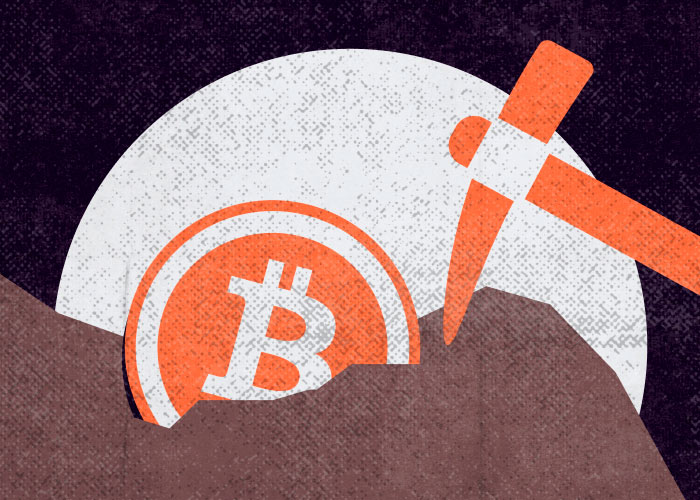Mining for First-Timers: All You Need to Know

Blockchain is reshaping the financial market, with cryptocurrencies opening up new opportunities for payments, investments, and passive and active income. A 2023 study found that 92% of users are aware of cryptocurrencies, but only a third of them understand what they are and how they work.
To remedy this situation and realize how Bitcoin and many other cryptocurrencies function, it’s necessary to sort out what mining is, why it is needed, how it is done, what types of mining exist, and how it can be profitable.
What Is Mining?

Mining is the process of confirming transactions and adding them to the blockchain network by performing complex mathematical and cryptographic operations. Miners are rewarded for their activities with new units of cryptocurrency that the blockchain network generates for each block added.
For more information about blockchain and its functionality, read our other article: https://coinspaidmedia.com/academy/what-is-blockchain/.
Mining of different cryptocurrencies is based on various encryption algorithms. For example, on the Bitcoin network, it’s SHA-256, on Litecoin — Scrypt, on Monero — RandomX, and so on. The mining process is carried out with the help of computing resources — a central processing unit (CPU), a graphics processing unit (GPU), or specialized equipment called an application-specific integrated circuit (ASIC). Mining with the power of mobile devices is also possible.
Mining is used in the operation of cryptocurrencies that are based on the Proof-of-Work consensus algorithm. Read more about different consensus algorithms here, and check this material about Bitcoin mining. In this article, we’ll cover mining in general, omitting technical details about specific cryptocurrencies.
Mining Methods
At the moment, there are several ways of mining.
Solo Mining

This method implies the need to independently purchase, configure, and maintain computing equipment. Accordingly, solo mining can be classified just by the type of equipment used.
CPU Mining
CPU mining is a classic method that was used for mining on the Bitcoin network in the early days of the first cryptocurrency. It involves using the processing power of a central processing unit to verify transactions on the blockchain network, calculate cryptographic hashes, and verify the data in the blocks.
A computer or laptop will suffice for CPU mining, but as competition and network complexity increased, GPUs (graphics processing units of video cards that provide higher computational performance) began to be used more widely as computing hardware. BTC mining with processors was no longer commonly practiced by 2015, but that doesn’t mean that CPU mining shouldn’t be considered in principle. Some cryptocurrencies can still be mined using CPUs, including Dogecoin, Aeon, Ravencoin, Beam, Vertcoin, Aeternity, and other altcoins.
GPU Mining
Using GPUs to mine BTC and altcoins has become the most common practice for a long time. Miners assembled entire farms of graphics cards, which consumed huge amounts of power and required substantial cooling and maintenance. Starting in 2020, the demand for graphics cards among miners provoked a shortage of supply and a rise in prices for the devices, so that many personal computer users far from cryptocurrencies learned about mining and Bitcoin beyond their will.
ASIC Mining
Application-specific integrated circuits (ASIC) are devices designed specifically for crypto mining. The first samples started appearing in the market back in 2012, and by 2018, large companies specializing in BTC mining had already completely switched or were completing the transition to ASICs.
Learn more about industrial Bitcoin mining in a special article: https://coinspaidmedia.com/bitcoin/industrial-bitcoin-mining/.
ASICs have much higher processing power compared to GPUs. However, they also have some disadvantages when it comes to independent mining, which include
- high cost;
- limited functionality;
- rapid wear and tear and obsolescence;
- the need for a significant amount of energy.
For the reasons outlined, ASICs have become used mainly by large companies specializing in crypto mining.
Mobile Device Mining
Smartphone mining is the process of mining cryptocurrency using the power of a mobile device. In this way, it’s possible to support the work of blockchain networks Monero, Litecoin, Zcash, and a number of other altcoins.
The pros include no need for additional investments. The cons are low income, high wear and tear of the device and its freeze-up, and risks of running into fraudulent software. Note that mining on a smartphone is more of an entertainment for enthusiasts and experimenters than an activity aimed at a specific result.
Pool Mining

As blockchain networks have grown, the complexity of mining has increased, as has the number of miners, so the likelihood of finding a block on your own, such as on the Bitcoin network, tends to zero. The solution is mining pools — individual miners join forces, distribute the work among each other, and share the reward regardless of which particular miner in the pool finds a block. Thus, the income of the miners is smaller but more stable. Besides, you can join a mining pool with almost any computing power, but the reward will be proportional to the contribution.
From a technical point of view, pool mining is the implementation of mining through a server that combines the computing power of all pool participants, thereby increasing their chances of detecting a block and receiving a reward. The reward distribution is also automatic. All solo miners, as well as their corporate counterparts, are connected to mining pools today. Therefore, even solo miners who periodically mine blocks on the Bitcoin network are also members of mining pools.
The largest mining pools are:
| Name | Supported hardware | Supported cryptocurrencies | Type of reward | Locations available |
| Binance | ASIC, GPU | BTC, BSV, BCH | PPS, FPPS | Europe, America, North China, South China |
| PEGA Pool | ASIC | BTC | FPPS | Europe |
| Slushpool | ASIC, GPU | BTC, ZEC, BCH | PROP, PPLNS | Europe, USA, Canada, Singapore, South Asia, Japan, Russia |
| F2pool | ASIC, GPU | BSV, ZEC, BTC, ETH, XMR, GRIN, LTC | PPS | China |
| Pool BTC | ASIC, GPU | BTC, ZEC, BCH | FPPS | Spain, Russia, France, Japan |
Cloud Mining

Cloud mining is mining cryptocurrency without buying your own equipment, using equipment rented remotely for an agreed period of time. The renter receives income from mining, minus the cost of electricity and equipment maintenance.
This type of mining looks attractive, but it’s one of the riskiest ways to mine cryptocurrencies because of the prevalence of Ponzi schemes in the industry. OneCoin and Bitcoin Savings & Trust are just two examples of this.
However, there are also services that actually work. As of September 2023, the top three biggest cloud mining platforms include:
- ECOS (BTC, USDT, ATOM, DOT, DASH, BUSD, ETH, USDC, BNB, and BCH);
- Genesis Mining (BTC, DASH, ETH, LTC, XMR, ZEC);
- NiceHash (BTC, ETH, LTC, DASH, XMR, DOGE, ZEC, DCR).
Is Crypto Mining Profitable?

Profit from mining directly depends on the complexity of the process, the cost of cryptocurrency, and electricity expenses. To calculate the profitability of mining, you can use multicurrency calculators, widely presented in the form of online services.
Today, crypto mining is a gigantic business. Mining isn’t limited to BTC, and participation in the process is an opportunity for a lot of miners to support the work of their favorite project, and ensure its decentralization, with a financial benefit being a pleasant bonus. Among participants in the crypto community, this is doubly relevant for projects with a higher level of privacy, such as Dash, Zcash, and Monero. We’ll talk about what cryptocurrencies can be mined besides Bitcoin in a separate article.











